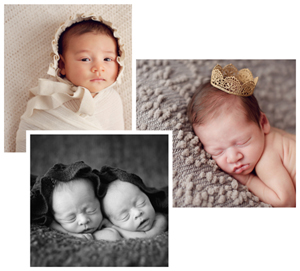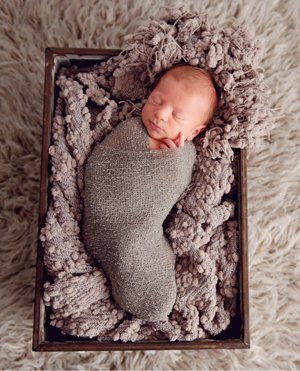FAMILY - BABY LOVE
Baby Love
February, 2013 - Issue #100
 |
Baby Photos at Home
"I come into contact with lots of new parents and the question I'm most often asked is how to take better pictures of precious little ones at home," says professional baby and family photographer Laurie Sachs. Here are her tips!
Turn off that flash!
Use the natural indirect window light in your home for a more engaging photograph. When photographing your child outdoors, look for open shade or shoot in the early morning or late afternoon for more pleasing light.
Watch the background.
It's wonderful to photograph your child in their natural environment but be mindful of clutter in your photos.
Get down to your child's level.
Get on the ground and play with them when you photograph your kids. You'll love this perspective!
Fill the frame.
Get in close and fill the frame with your baby's sweet face for candid snapshots you'll treasure.
Keep it simple.
Don't worry about staging elaborate scenes or having perfectly-coordinated outfits; simply catch your children being themselves. The candid joys of childhood are the memories you'll want to remember.
Safety first!
Never try to replicate shots you've seen done by a professional. Many final images are achieved through Photoshop. Never place them on any elevated surface without an adult. No photo is ever worth putting your child in danger.
Have fun.
Moments of genuine joy will be worth way more to you than a stiff or staged expression.
Laurie Sachs Photography. 305-5493 www.lauriesachsphotography.com
 |
Health Benefits for Baby
Many recent studies show that planned out-of-hospital births can be a safe option for low-risk mothers and, in some cases, may even be safer than hospital births. With so much technology available, how can this be true? Many hospital interventions have potential side effects for baby; the chance of infection is increased in the hospital setting; and routine newborn procedures can interfere with bonding and breastfeeding.
Every intervention used in a hospital delivery can have potential side effects for mom and for baby. These interventions include commonly-used medications such as epidurals and Pitocin, which is used to induce or augment labor. These interventions may also increase the use of instrumental delivery such as vacuum and cesarean sections. All of these interventions include risks to our babies. When birthing in an out-of-the-hospital setting, these interventions are never used.
If these interventions become necessary during your out-of-hospital birth, your midwife will take you to the hospital where these interventions can be monitored more closely.
Routine procedures done in the hospital can interfere with bonding and breastfeeding. Breastfeeding is the healthiest start you can give your baby. Separation after birth and routine newborn procedures such as blood draws, bathing and prolonged warming can interfere with breastfeeding initiation and the bonding process. Again, when choosing to birth in an out-of-hospital setting, there is no separation of mother and baby.
For low-risk mothers, a planned out-of-hospital birth can provide health benefits to their baby by decreasing risks from interventions, decreasing infections and by supporting breastfeeding and bonding.
SCV Birth Center, the Santa Clarita Valley's only free-standing birth center, also offers classes - including Breastfeeding Basics and Birth Hypnosis classes.
254-3000 www.scvbirthcenter.com
|
||||||||||||||||||||||||||||




